Recent advances in the understanding
of the rapid neutron capture process

LA-UR-19-XXXXX
Matthew Mumpower
ANL Seminar
Monday Sept. 9$^{th}$ 2019

FIRE Collaboration
Fission In R-process Elements
To understand the formation of the elements
Requires deep knowledge of a range of fields, including:
The theoretical modeling of astrophysical environments
Multi-messenger observations (gravitational waves, EM waves, etc.)
Nuclear theory predictions for exotic nuclei
Precision experiments to constrain nuclear theory
Data and observations are limited
We must be clever when deciphering what is going on with nucleosynthesis...
What is the $r$-process?


Rapid neutron capture that occurs in astrophysical environments allowing for the production of heavy elements
Neutron captures are initially much faster than $\beta$-decays
Relative slowdown in the nuclear flow (right) produces peak structures in the observed abundances (left)
Astrophysical environment must produce a lot of free neutrons in order for this process to proceed
Where can the $r$-process occur?
One possibility is in (rare?) supernovae
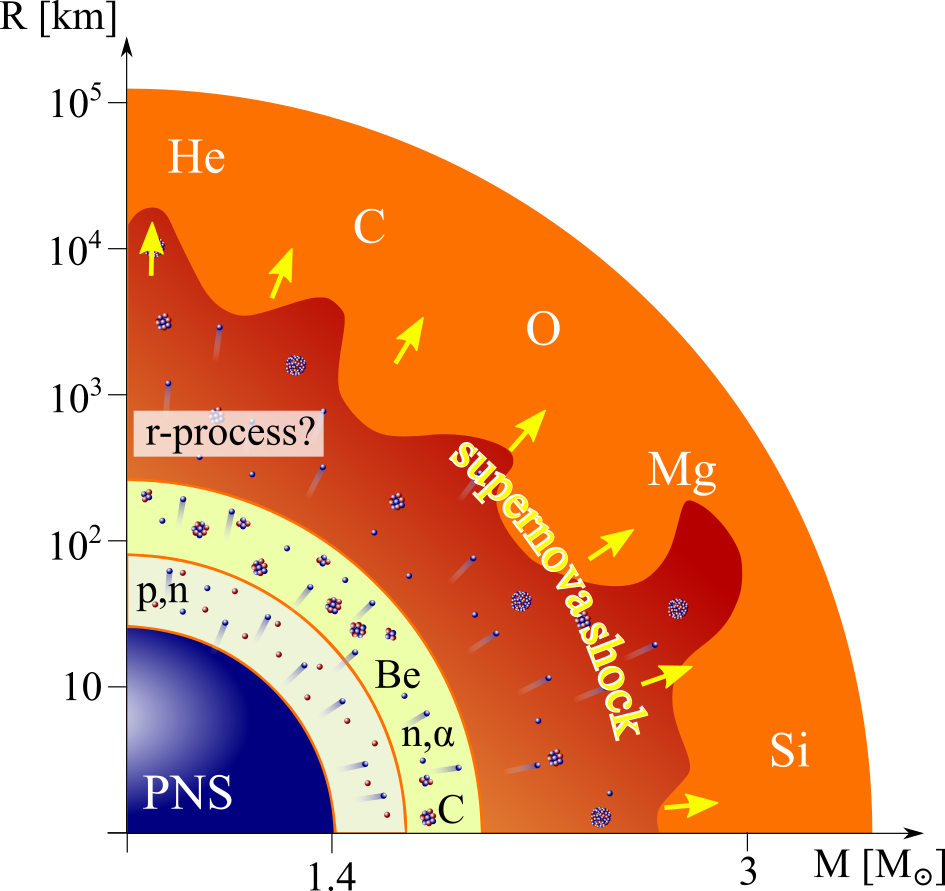
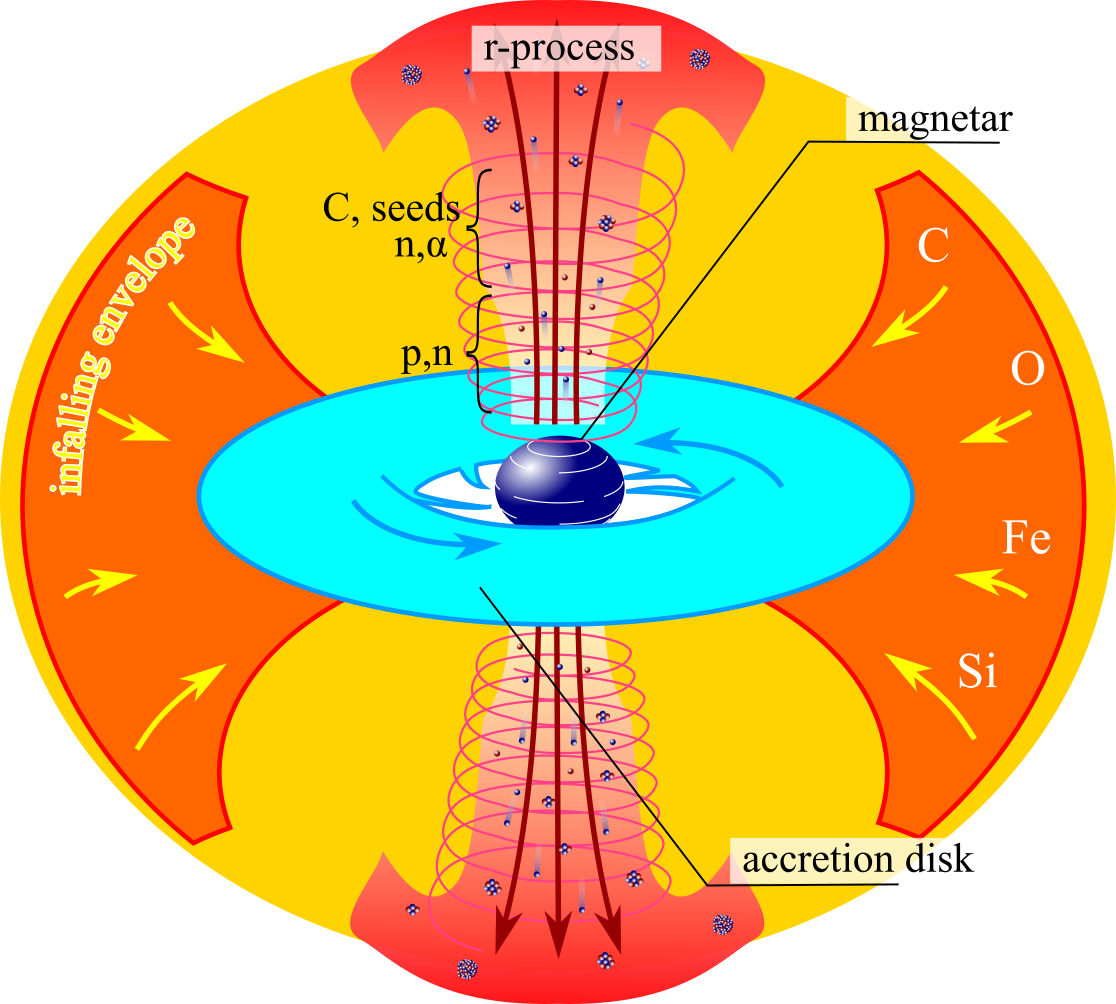
For standard supernovae (left) neutrino physics still needs to be well understood
Jets in magnetorotational driven supernovae (right) may also provide the necessary conditions
Another option is the disk winds of collapsars - black hole forms after core collapse of a rapidly rotating star
Where can the $r$-process occur?
Another possibility is in compact object mergers

A binary merger of neutron stars is an exciting possibility (some indirect evidence exists)
Another option is in the disk of a black hole neutron star binary
How can we observe the $r$-process?
Gravitational waves are emitted by explosive events (can be detected by LIGO)
Electromagnetic signals may be detected from the radioactive decay of heavy nuclei
The problem with EM signals is that we can only detect them if the event is close
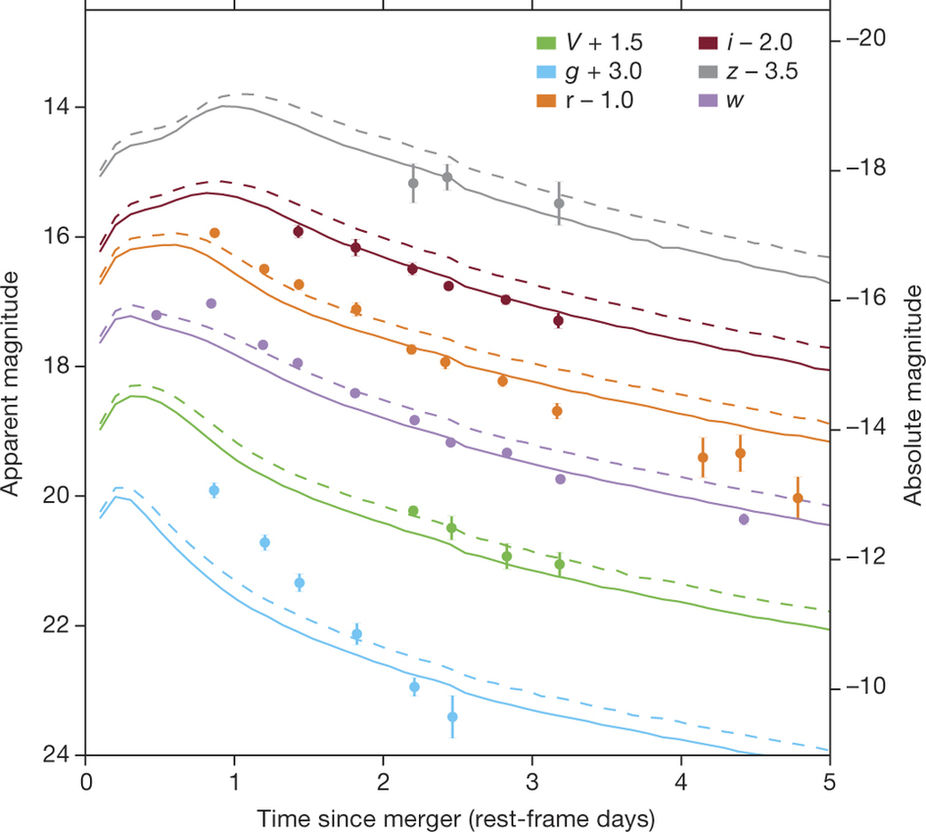
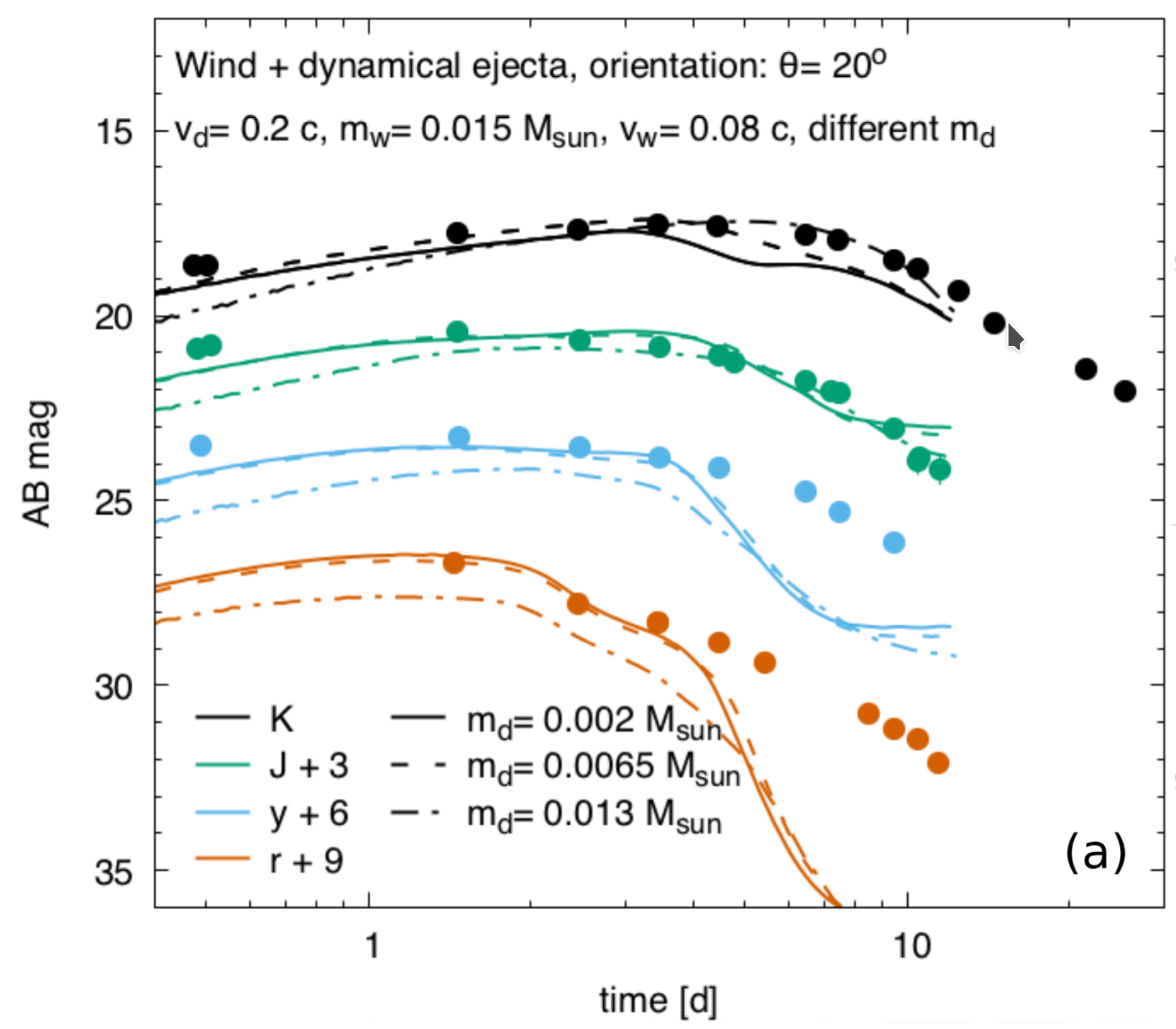
(left) Low lanthanide fraction (right) high lanthanide fraction → major degeneracies in the model space
Schematic of a kilonova (NSNS)
2 component model: wind & dynamical eject
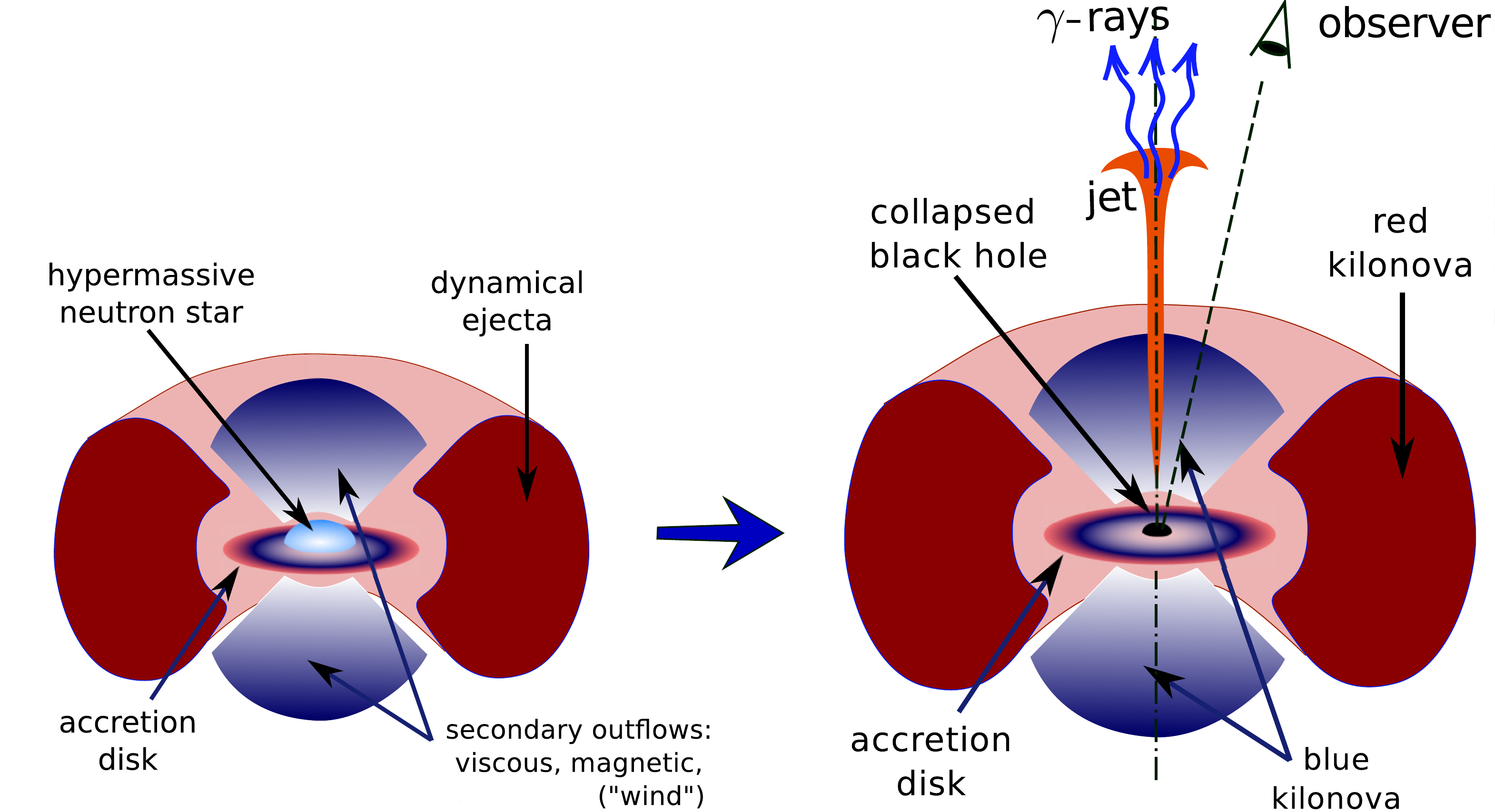
Red emission: late (weeks); lanthanide dominated
blue emission: early (days); UV dominated
When we model nucleosynthesis
We want to describe the abundances observed in nature

But there is uncertainty in:
The astrophysical conditions (large variations in current simulations)
The nuclear physics inputs (1000's of unknown species / properties)
Inputs from nuclear physics
1st order: masses, $\beta$-decay rates, reaction rates & branching ratios
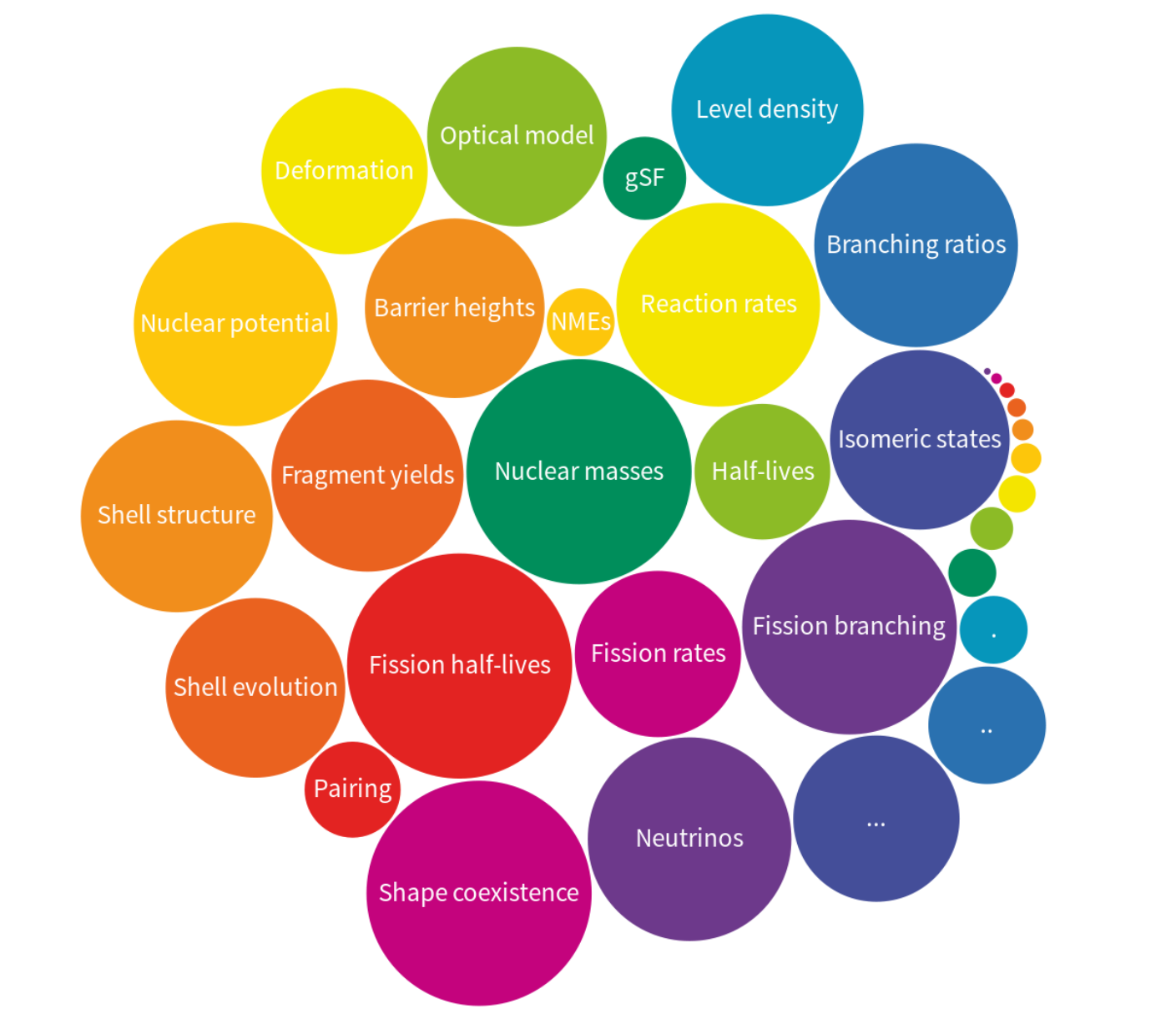
What do we know?
The chart of nuclides
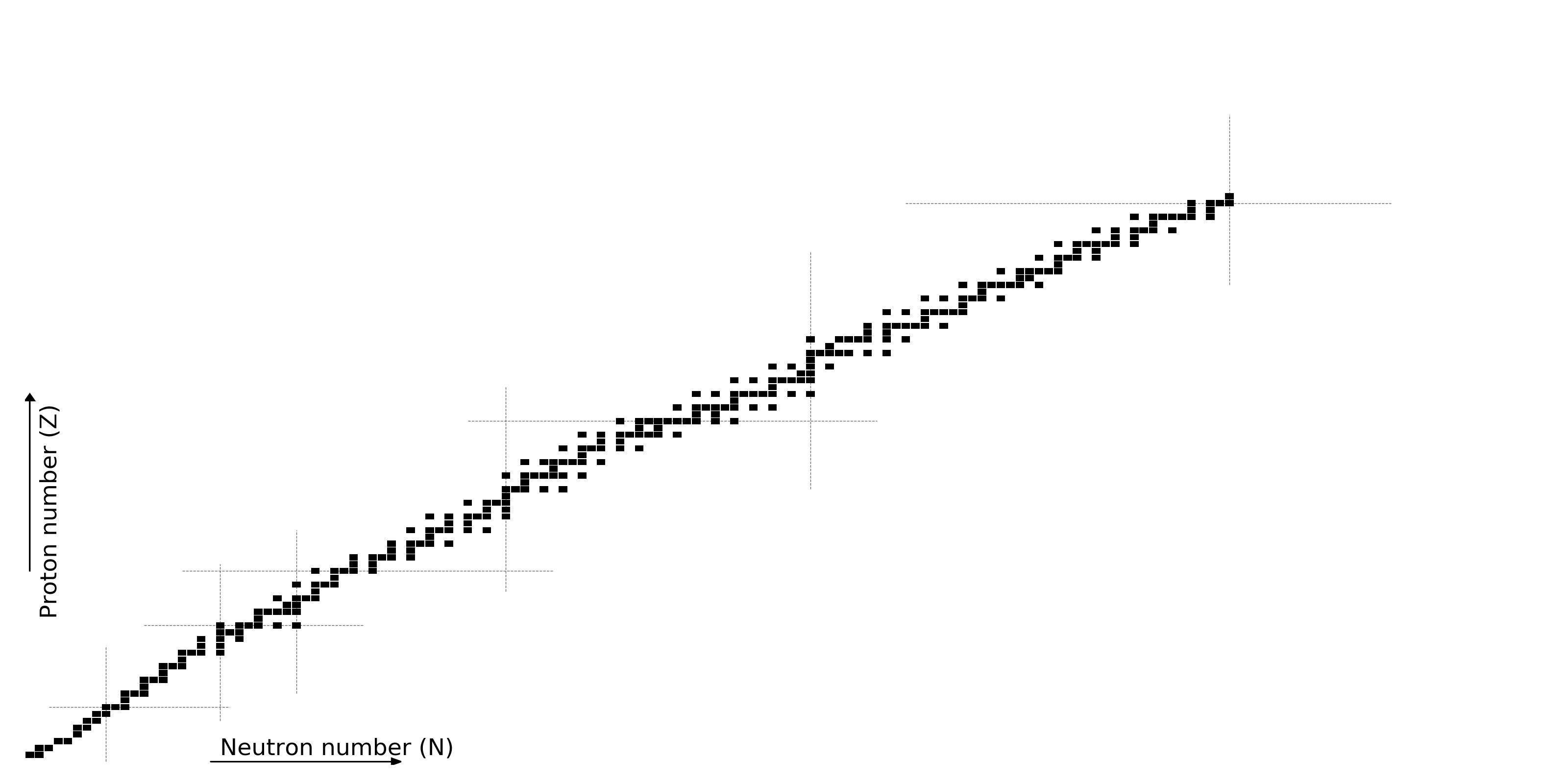
What do we know?
All half-lives

What do we know?
Nuclear masses
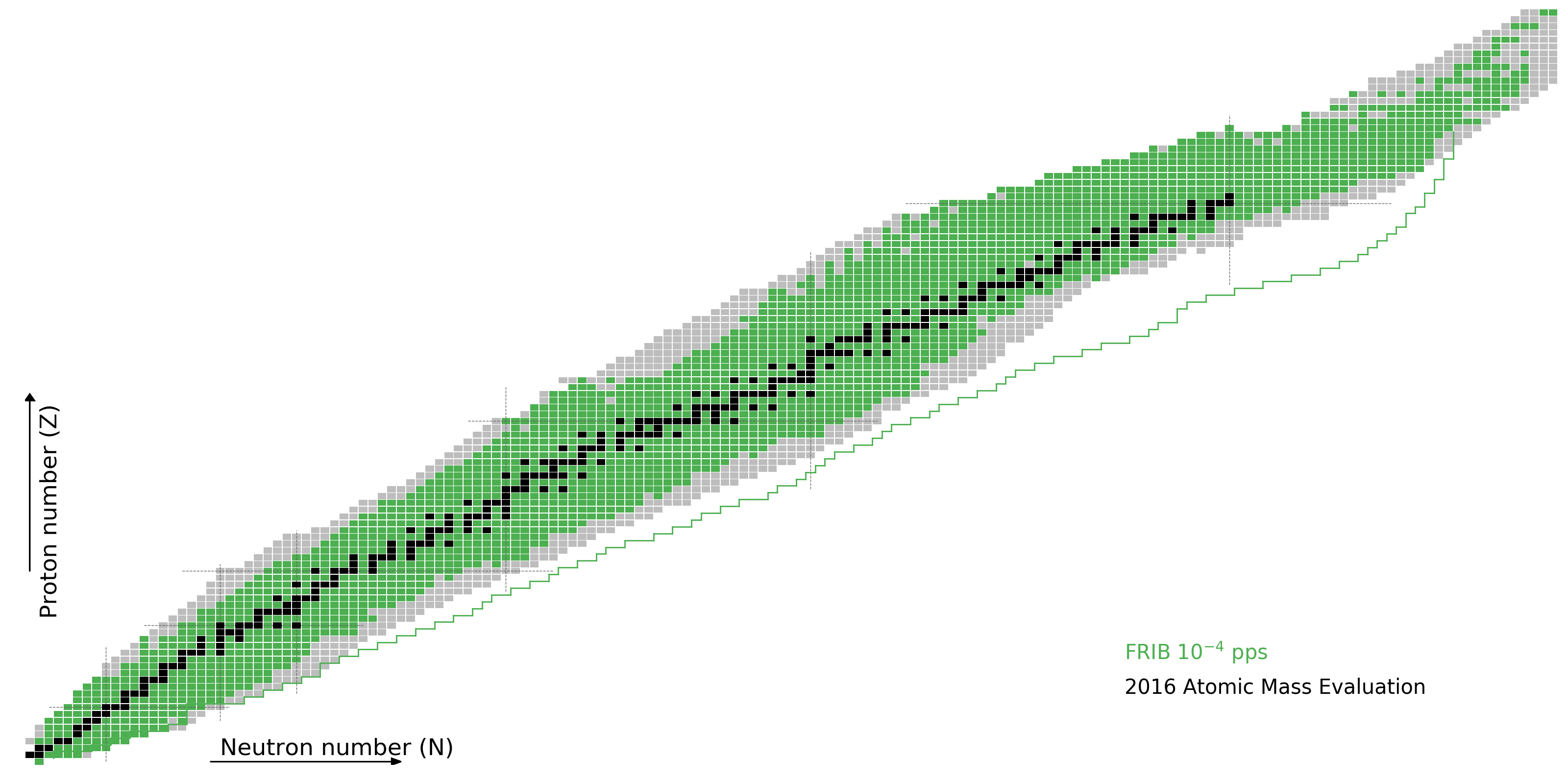
What do we know?
Neutron capture rates
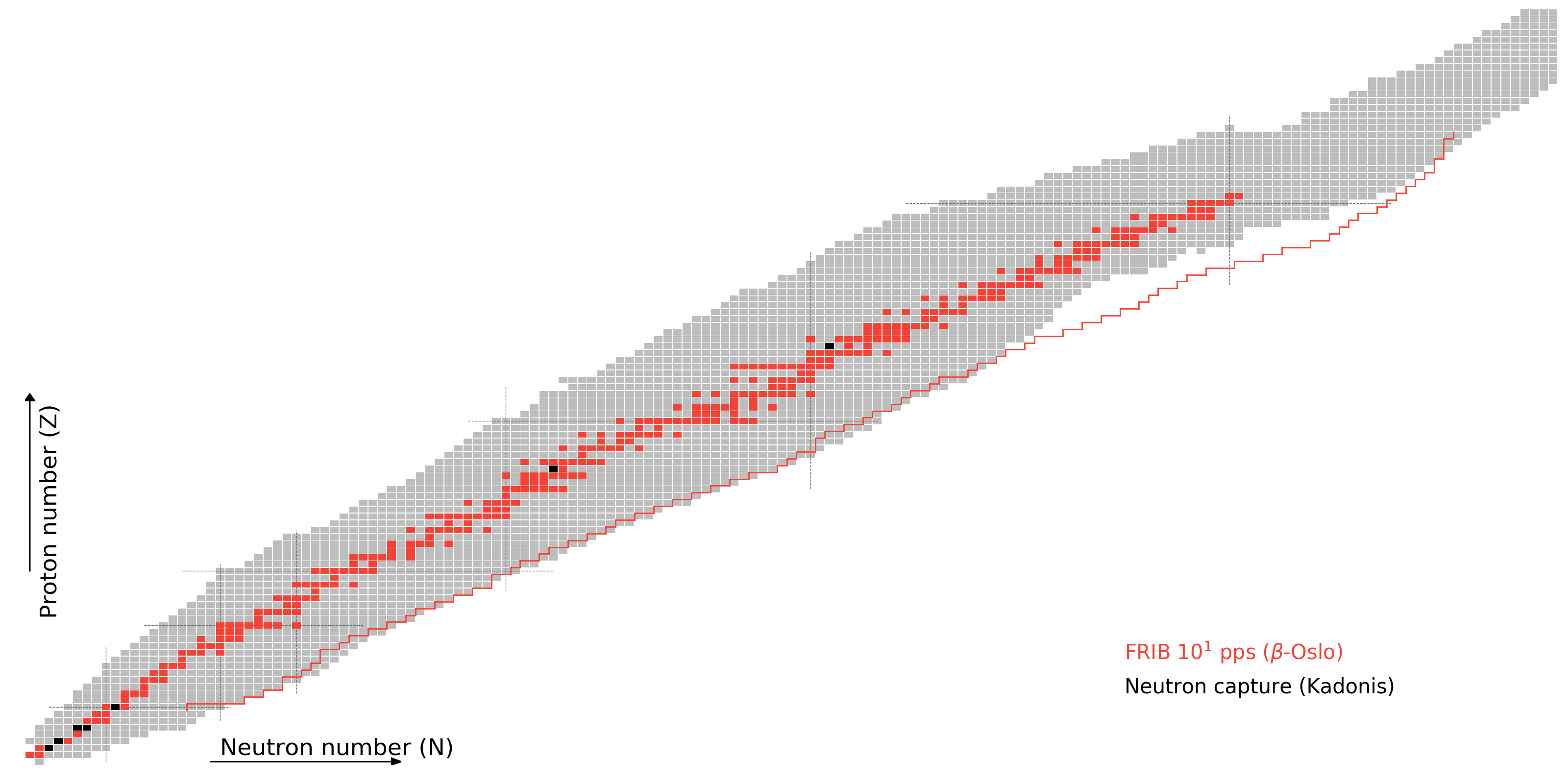
What do we know?
As of today, to varying degrees of accuracy
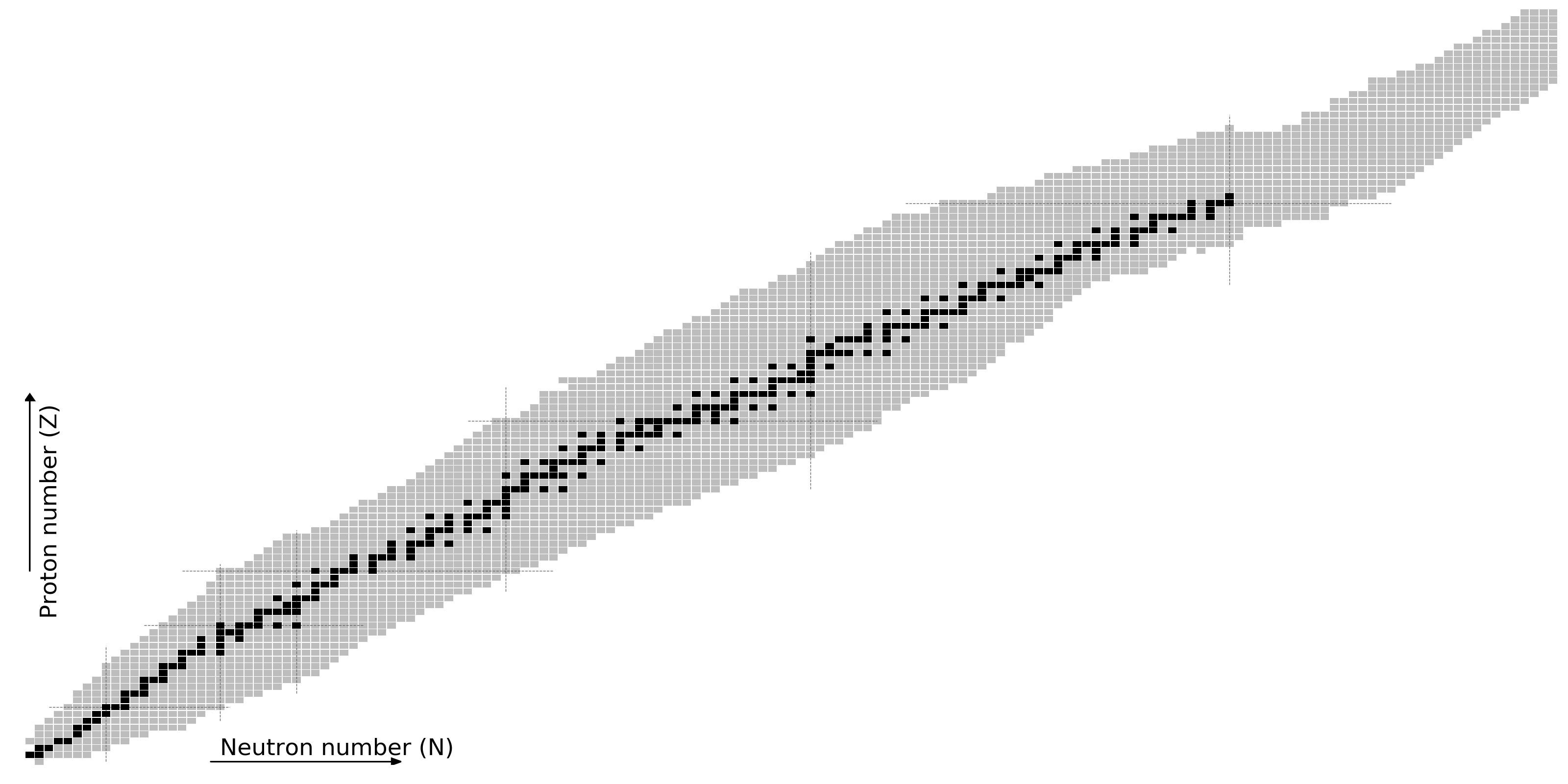
The r-process requires nuclear theory
Even in the era of FRIB
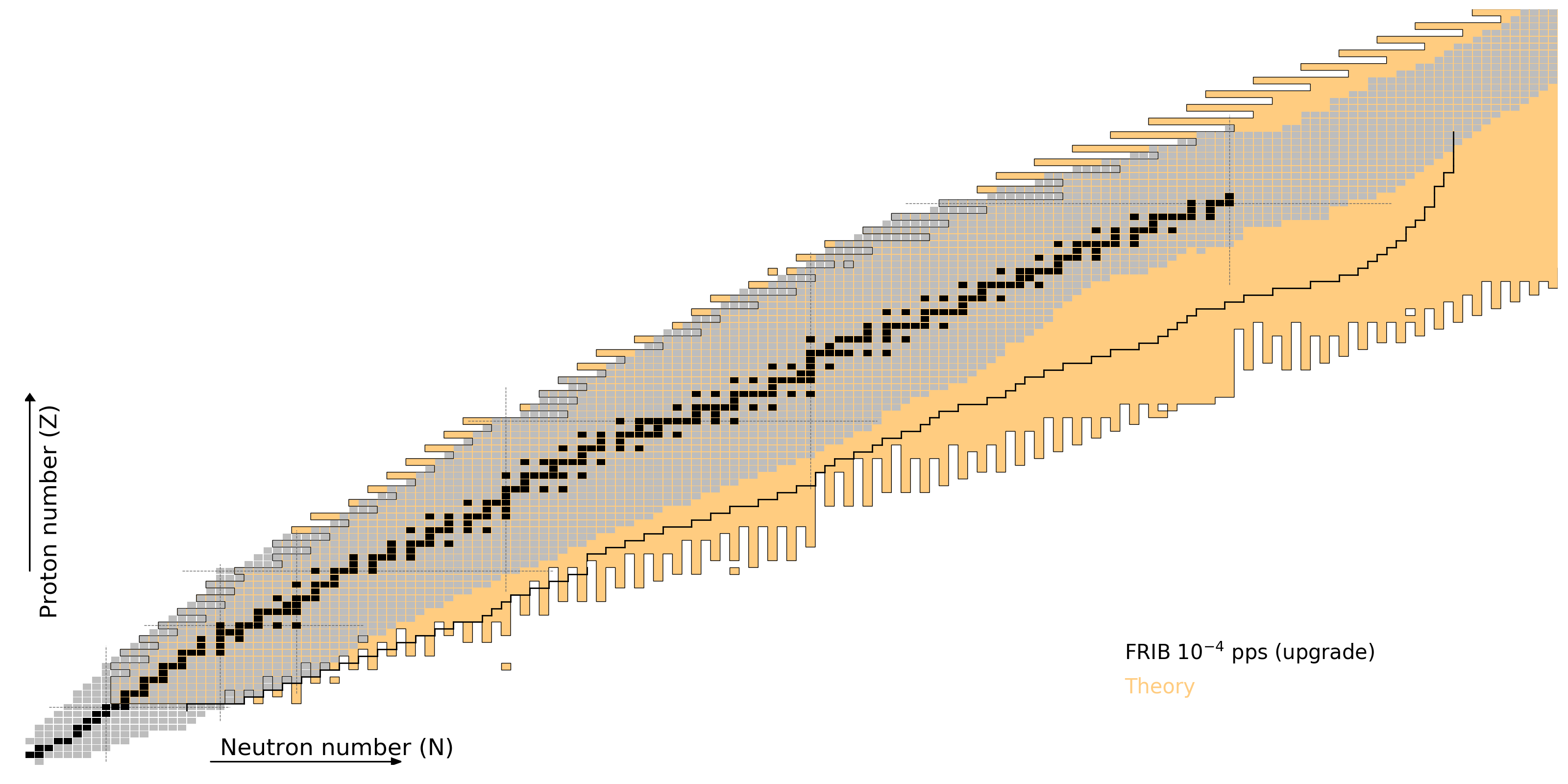
Results
Distribution of $Y_e$
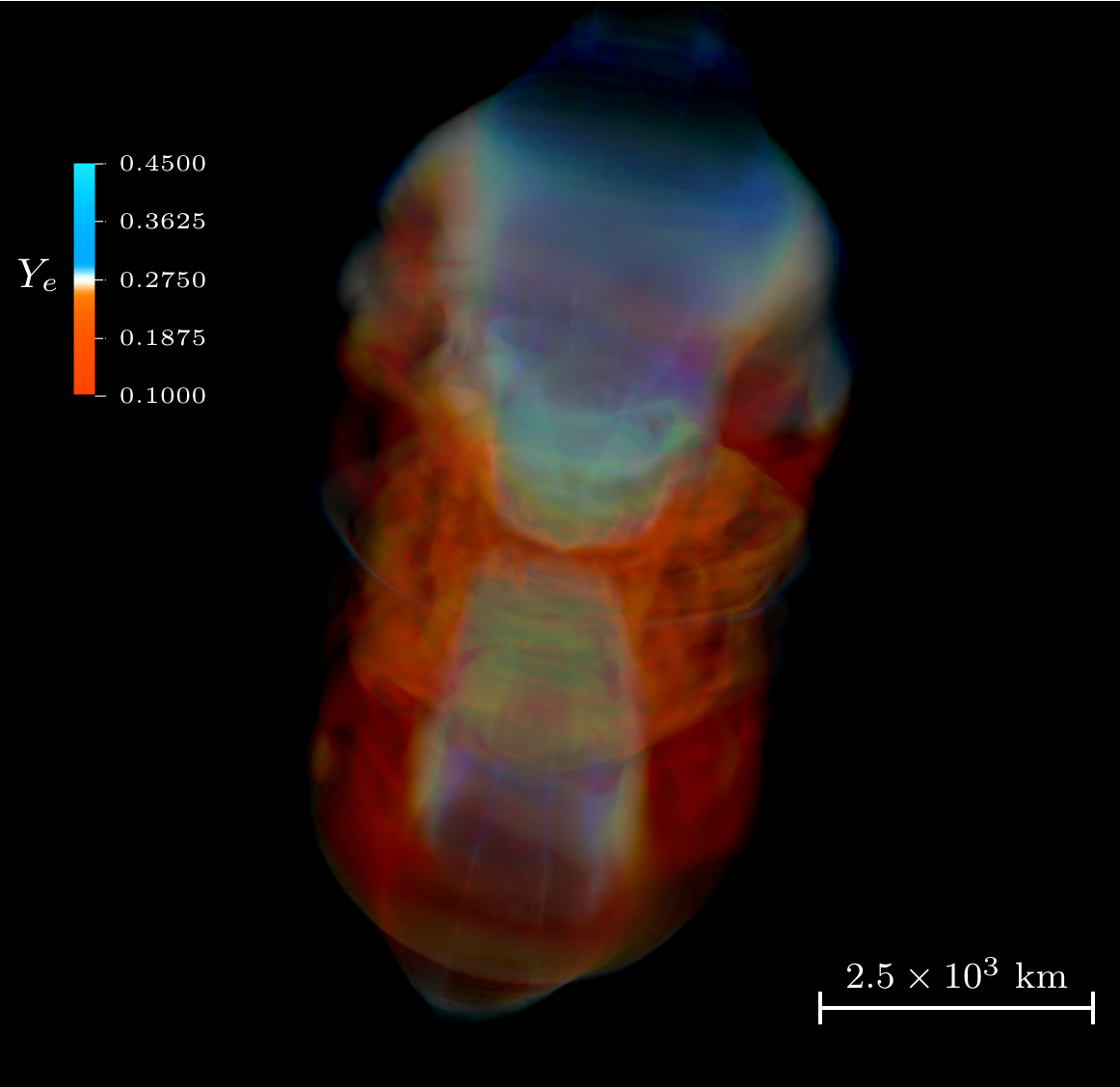
Volume rendering of electron fraction, $Y_e$
Jet drives material and voids region near azimuthal axis; high $Y_e$
Morphology of ejecta
Accretion Disk
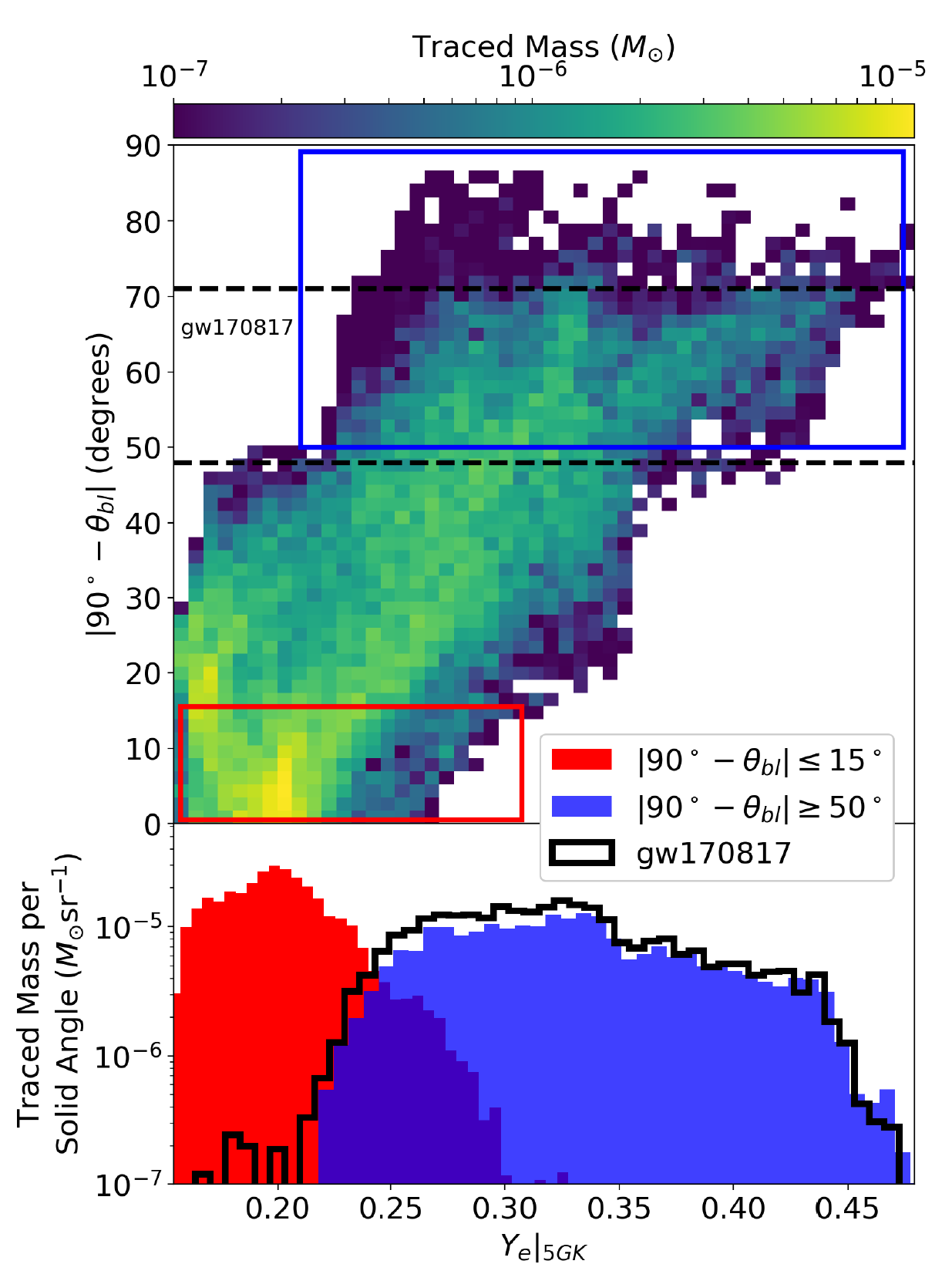 |
Surrounding a black hole Viewing angle critical for what composition you see Measured from the mid-plane of the disk Our model is consistent with observations of a blue kilonova Red, full $r$-process material seen near mid-plane The disk can contain a large amount of material But exactly how much is gravitationally unbound? Further... What is the important role of neutrinos? |
|---|
Neutrinos impact the nucleosynthesis
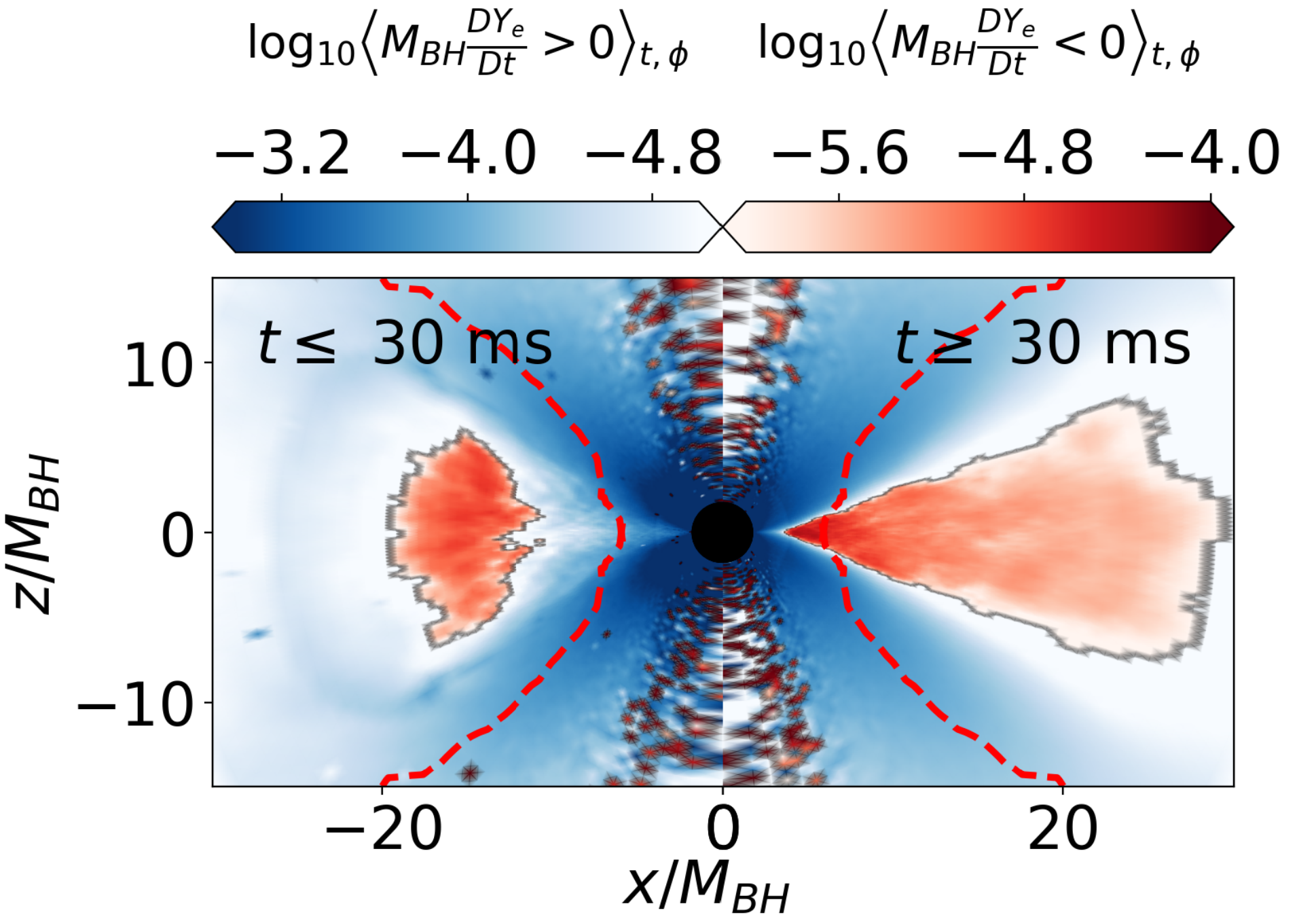
Exactly how the ejecta is processed by neutrinos is not fully analyzed yet
Blue region has high $Y_e$; red lower $Y_e$
The transit time away from the disk is crucial
Resultant nucleosynthesis

Nucleosynthesis simulation with J. Lippuner's SkyNet
Mass weighted trajectories suggest blue kilonova
It is critical to get the full morphology and thereby composition correct...
Inferring composition is tricky
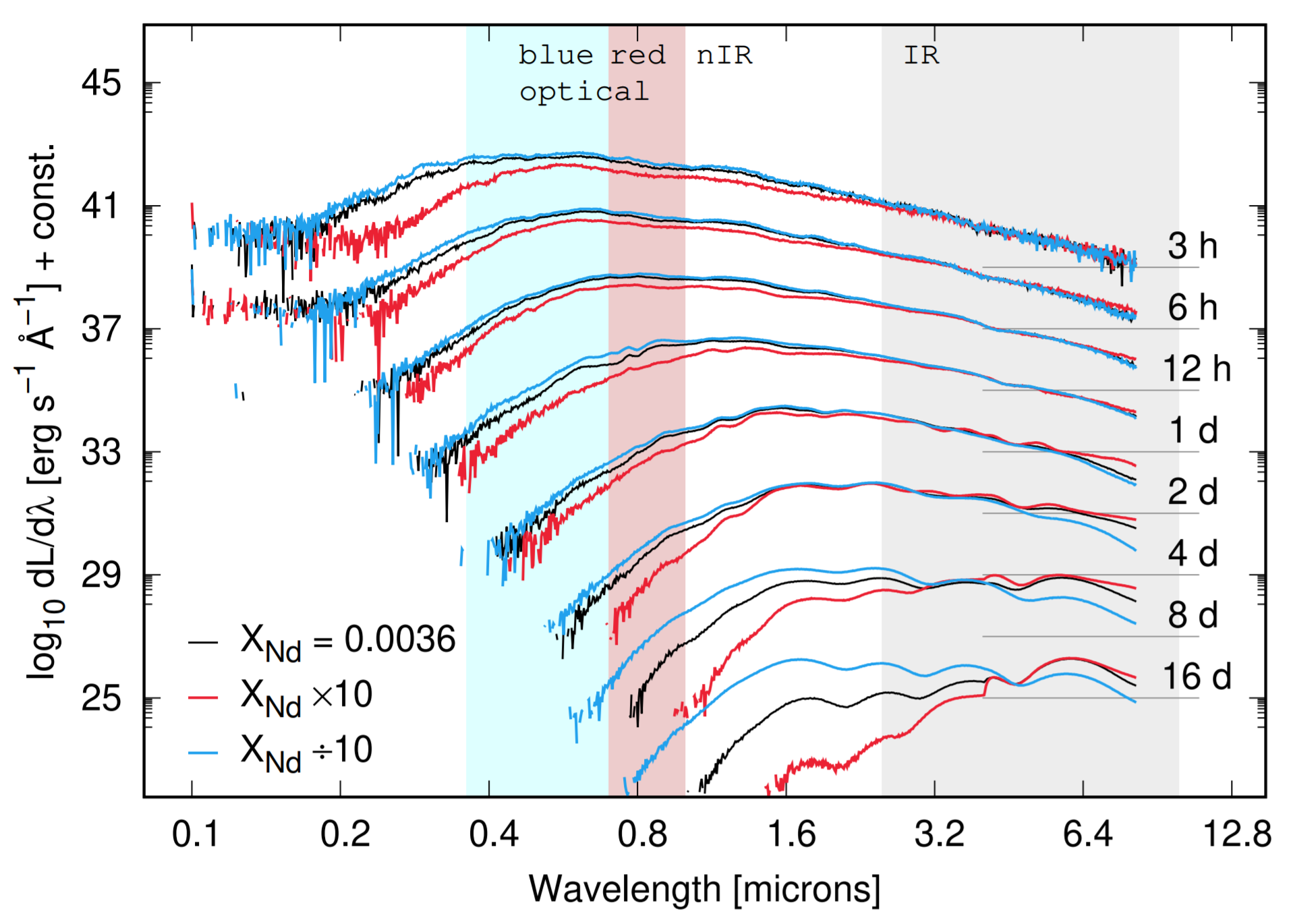
One way is to find a proxy in the observed light curve spectrum
Nd is a good choice because it is a high opacity lanthanide
The amount of Nd is absolutely crucial to the observed light curve
But it is important to remember that there are still many astrophysical model degeneracies as this point...
One way to solve this...
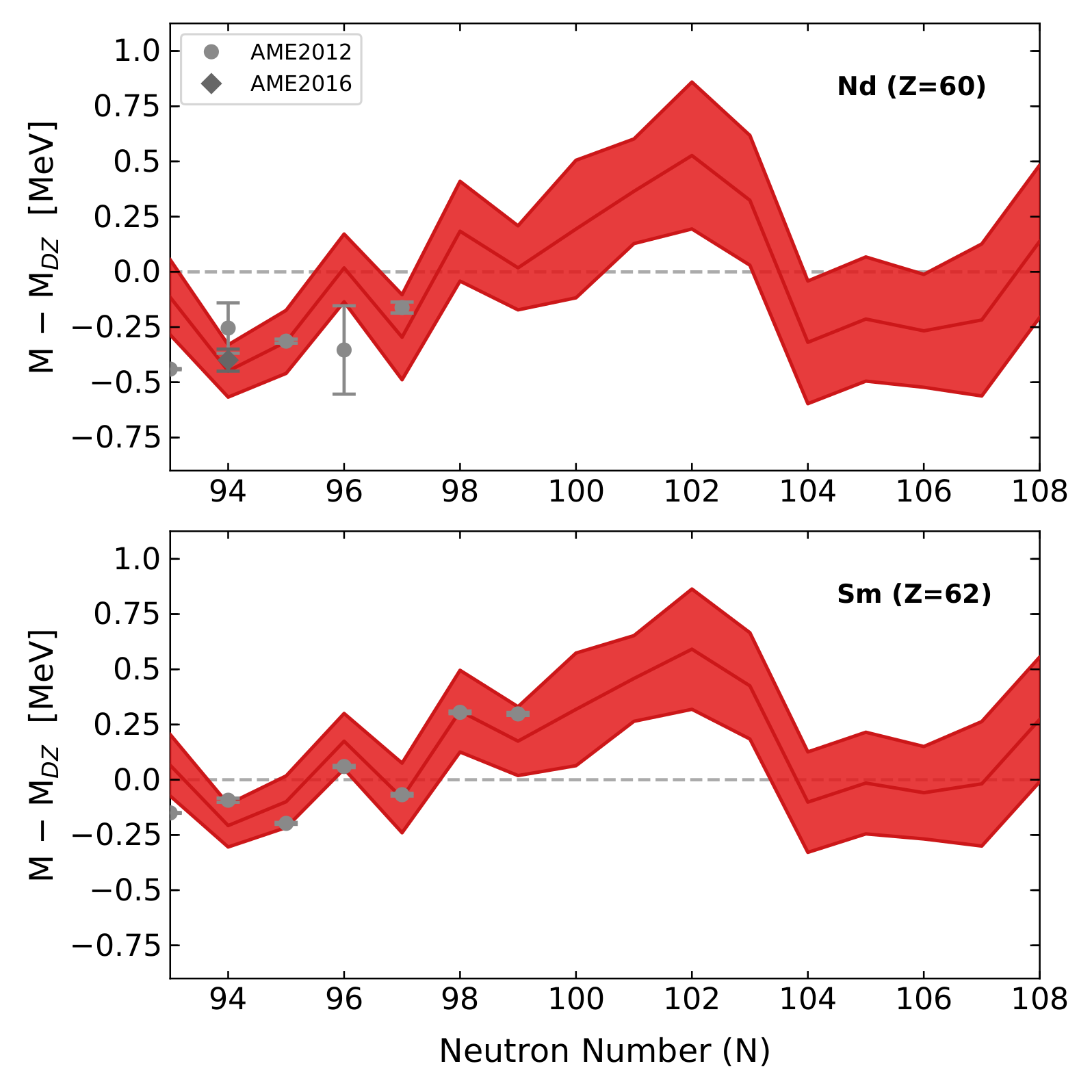
Try to better understand Nd production which is also a proxy for the astrophysical conditions
To do this we need to predict the nuclear masses of highly deformed rare earth elements
We use information about the solar isotopic composition to inform our model of nuclear masses
Mass predictions
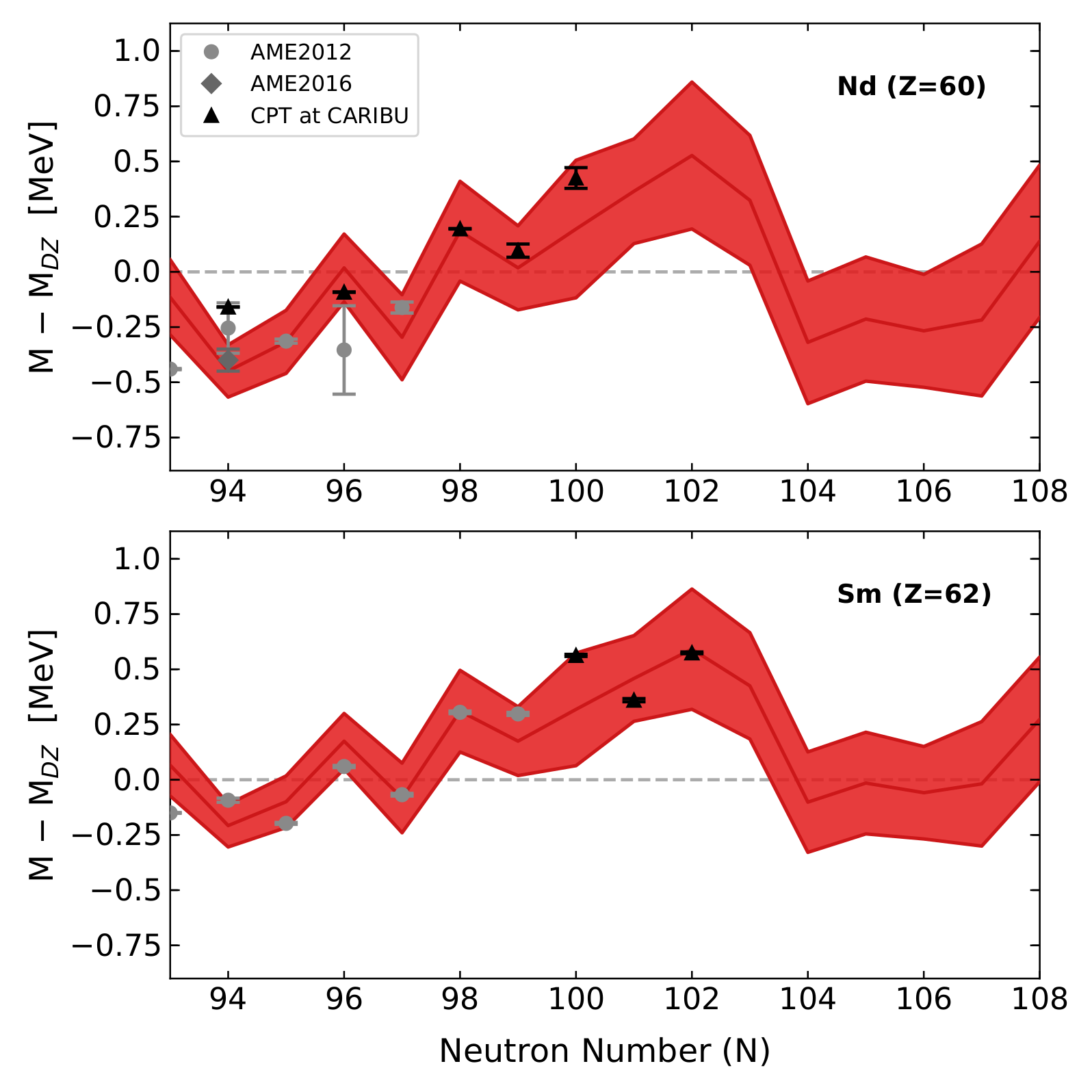
The predicted trend matches CPT data!
The downturn between N=102 and N=104 is near the midshell - critical for peak formation - will it also be found?
Sensitivity to astrophysical conditions
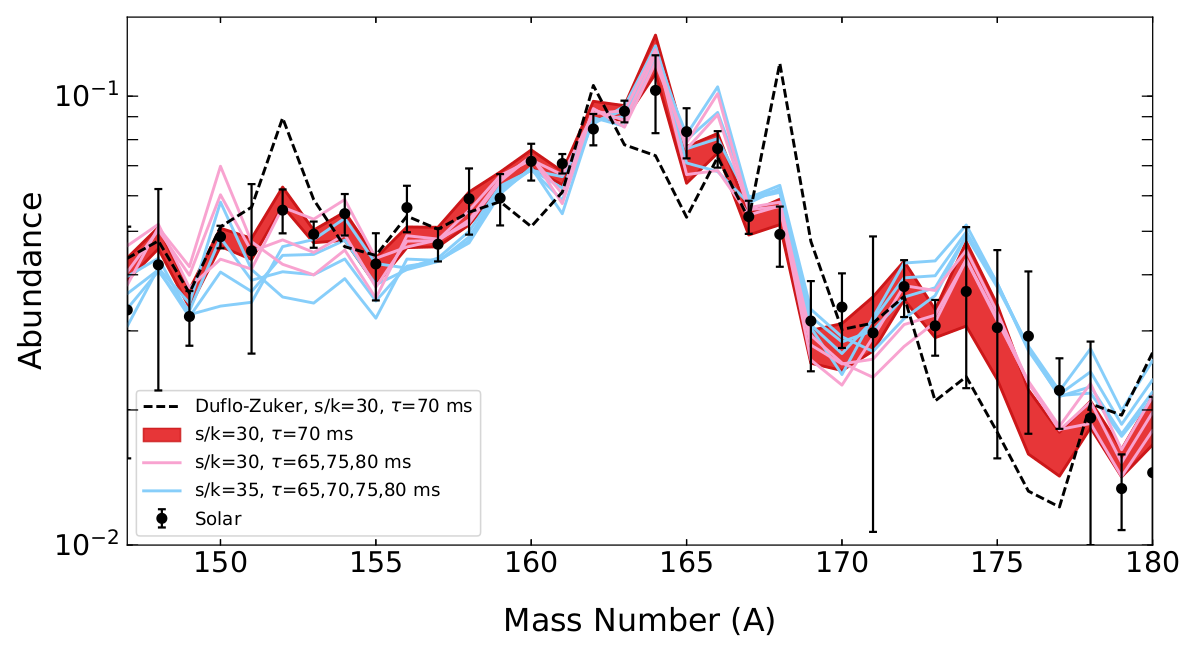
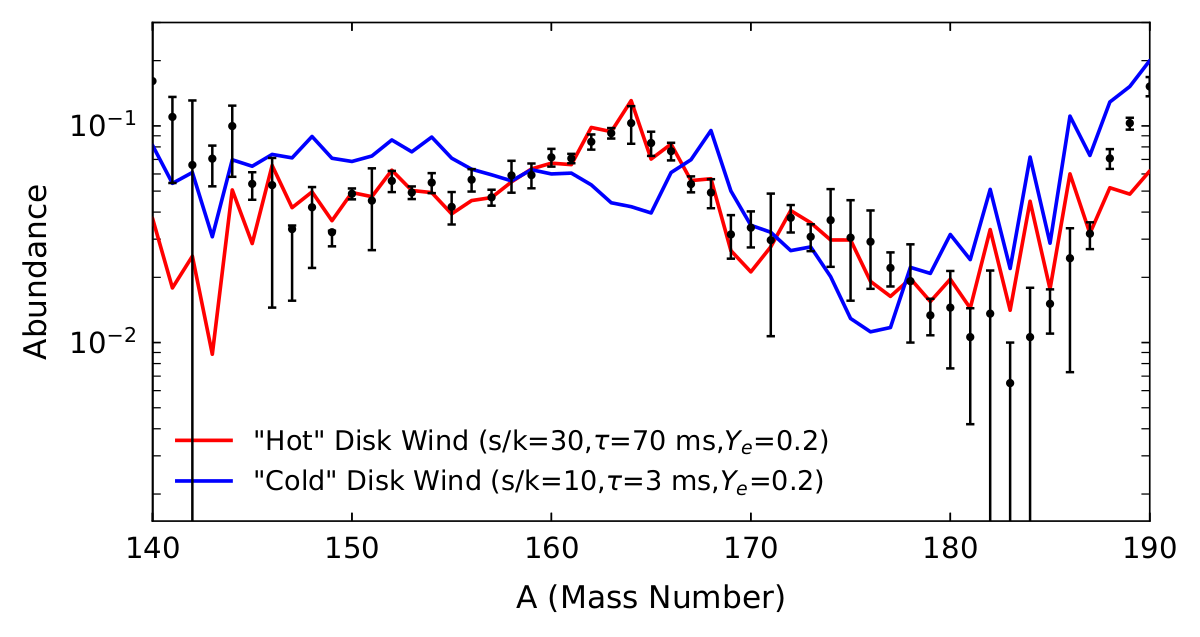
The trend is robust for small changes to astrophysical conditions (left)
But if we change the conditions too much (right) we no longer fit the abundances
This result is completely dependent on the N=104 feature which has yet to be measured
The possibility for mass measurements to discrimenate between astrophysical conditions is nearly at hand!
N=126 Factory
The N=126 Factory
Probe nuclei FRIB may have trouble producing...
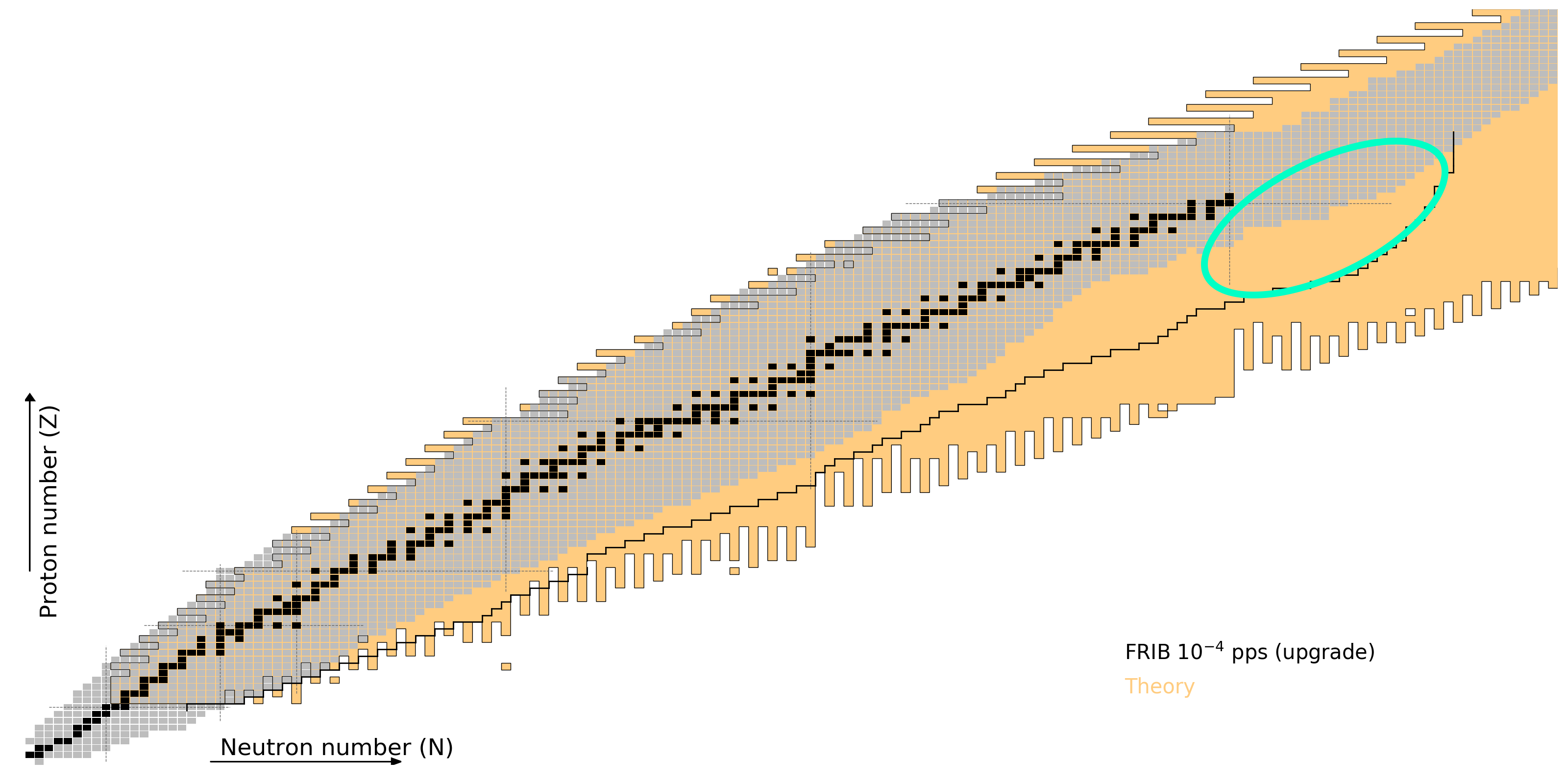
Importance for the $r$-process
A dirty secret: nucleosynthesis simulations have trouble reproducing
(1) the peak height and (2) the position of the A=195 peak (due to the N=126 shell closure)
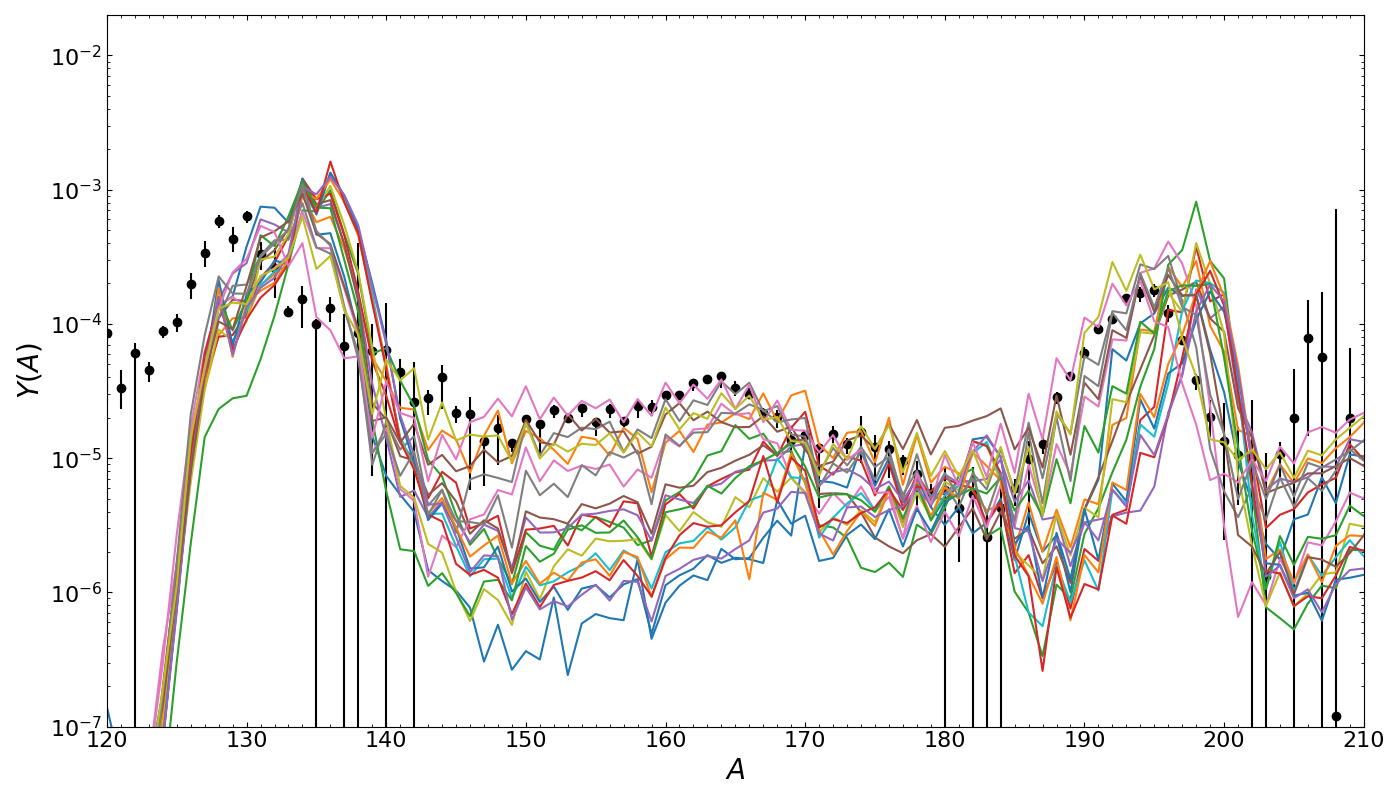
Final abundances using 20 mass models given the same astro. conditions
The N=126 factory can help us to understand the evolution of shell structure which will greatly impact $r$-process calculations
The N=126 shell closure acts as the gatekeeper to production of the actinides
Critical for understanding actinide production
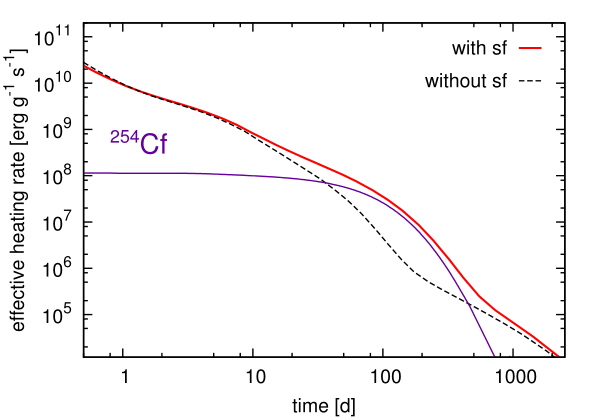
Is there any precursor to show that actinide nucleosynthesis has occurred in an event?... YES!
The spontaneous fission of $^{254}$Cf primary contributor to nuclear heating at late-time epochs
If $^{254}$Cf is produced it has a clear distinct signature with $T_{1/2}\sim 60$ days
Observational Impact
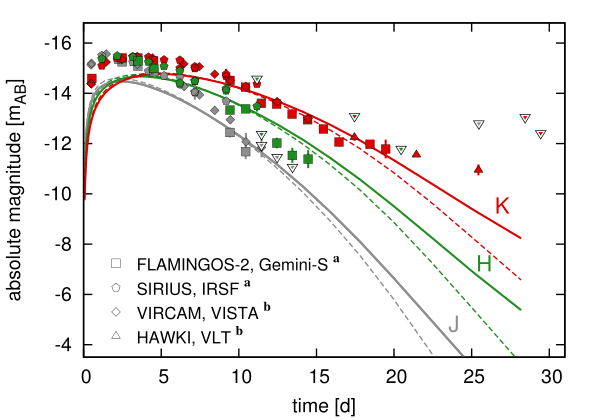
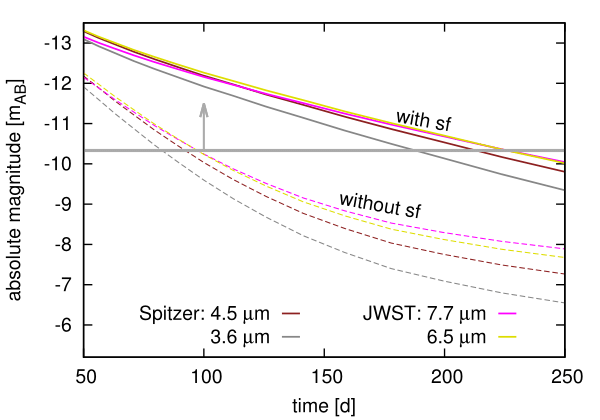
Both near- and middle- IR are impacted by the presence of $^{254}$Cf
Late-time epoch brightness can be used as a proxy for actinide nucleosynthesis
Future JWST will be detectable out to 250 days with the presence of $^{254}$Cf
This is all tied to the strength of the N=126 shell closure!
Recently extended actinide studies
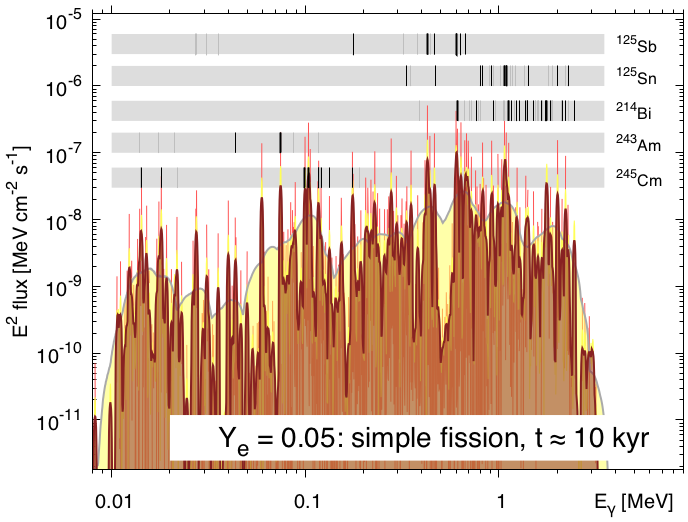
Look at the $\gamma$-ray spectrum when producing actinides; event to be very close
Can we do this with future space missions?...

Special thanks to
My collaborators
A. Aprahamian, A. Burrows, J. Clark, J. Dolance, W. Even, C. Fontes, C. Fryer, E. Holmbeck, A. Hungerford, P. Jaffke, T. Kawano, O. Korobkin, J. Lippuner, G. C. McLaughlin, J. Miller, W. Misch, P. Möller, R. Orford, G. Savard, T. Sprouse, R. Surman, N. Vassh, M. Verriere, R. Wollaeger, Y. Zhu
& many more...
▣ Student ▣ Postdoc ▣ CTA Staff ▣ FIRE PI
Summary
Our understanding of the $r$-process has been rapidly evolving over the past several years
Recent insights include:
modeling of astrophysical environments ▴ Multi-messenger observations
Nuclear theory predictions ▴ Precision experiments
The material from accretion disks may contain the bulk of the ejecta from a binary neutron star merger
Observations depend on angle & morphology & composition
Important if we want to prove definitively that heavy elements such as the actinides were made in an event
Astrophysics can be used as an alternative benchmark for nuclear models, in addition to experimental data
An effort to improve nuclear modeling is ongoing at LANL
Collaboration between Argonne & Los Alamos has been very successful with many projects to come!
Results / Data / Papers @ MatthewMumpower.com